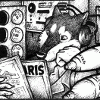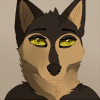
Firethorn YB-12/Martinet Prototype in flight evaluation colour with bright yellow undersides and square P insignia on its vertical fin. The YB-12 was the winner of IAF fast bomber competition, which participated by 5 companies including Firethorn's main contender, Nordenfeld Aviation, Its sleek fuselage and low aspect ratio wing reflected its speed and high-altitude performance. The low cross sectional area of engine nacelles was achieved by using three row 21-Cylinder radial engine with reduced bore and stroke instead of large two row 18-Cylinder engine, further refining its aerodynamics while still preserving its performance.
The full-scale development of YB-12 results in B-12A/Martinet Mk.I
The full-scale development of YB-12 results in B-12A/Martinet Mk.I
Category All / All
Species Unspecified / Any
Size 1000 x 611px
File Size 441.1 kB
Learn from the past. Whether you want to design classic biplanes or futuristic fighter jets, study existing aircrafts and take what's work and throw what's not, sometimes you'll come across design aspect that works exceptionally well but didn't make it to production. if you have some ingenious idea that might work you may take those as well. Fine tune everything then do reality check (Will it flies? does this feature really necessary? how will it perform?). Repeat until you've reach satisfactional design
If you want to design aircraft solely for it's aesthetics, then sorry i can't help you. I'm educated as an engineer, not a concept artist. Although engineering is an art by itself, our primary goal is to design stuffs that work, however ugly it is
If you want to design aircraft solely for it's aesthetics, then sorry i can't help you. I'm educated as an engineer, not a concept artist. Although engineering is an art by itself, our primary goal is to design stuffs that work, however ugly it is
Yeah! "Form follows function" is a good rule to follow, but if one can add graceful lines to the design, that's even better. It also helps to have a backlog of good information such as the cut away drawings found in Air Classics magazines, and technical books on aircraft design. Andrew Whyte ASAA's book "How to draw and paint aircraft like a Pro" is a good book to start with.
Oh yeah... And visit an air museum to take reference photos. Sometimes if one makes a "Donation" to the docents they'll open up the aircraft for you to take a look at the insides.
Oh yeah... And visit an air museum to take reference photos. Sometimes if one makes a "Donation" to the docents they'll open up the aircraft for you to take a look at the insides.
I personally kept a book called Aircraft Design Sketchbook, originally compiled and published by Lockheed in 1940 for the benefit of aircraft engineer of that time, now republished by Dover. Ever since i was kid i've always fascinated by the skill of old time draftman of the pre-CAD eras (Among them, Mr. J.H. Clark who illustrated Flight), damn those cutaways and schematics are jaw droppingly awesome considering they're drawn with ink, T-square and slide rules!
Spot on on the Canberra, when designing high-speed high-altitude medium bomber Canberra is simply the best of its class. I take the best features and construction of Canberra into one of USAAF fastest medium bomber, B-26 Marauder, So no G4M Betty here although they looks quite similar. The canopy is also a streamlined version from DH Mosquito

 FA+
FA+
















Comments